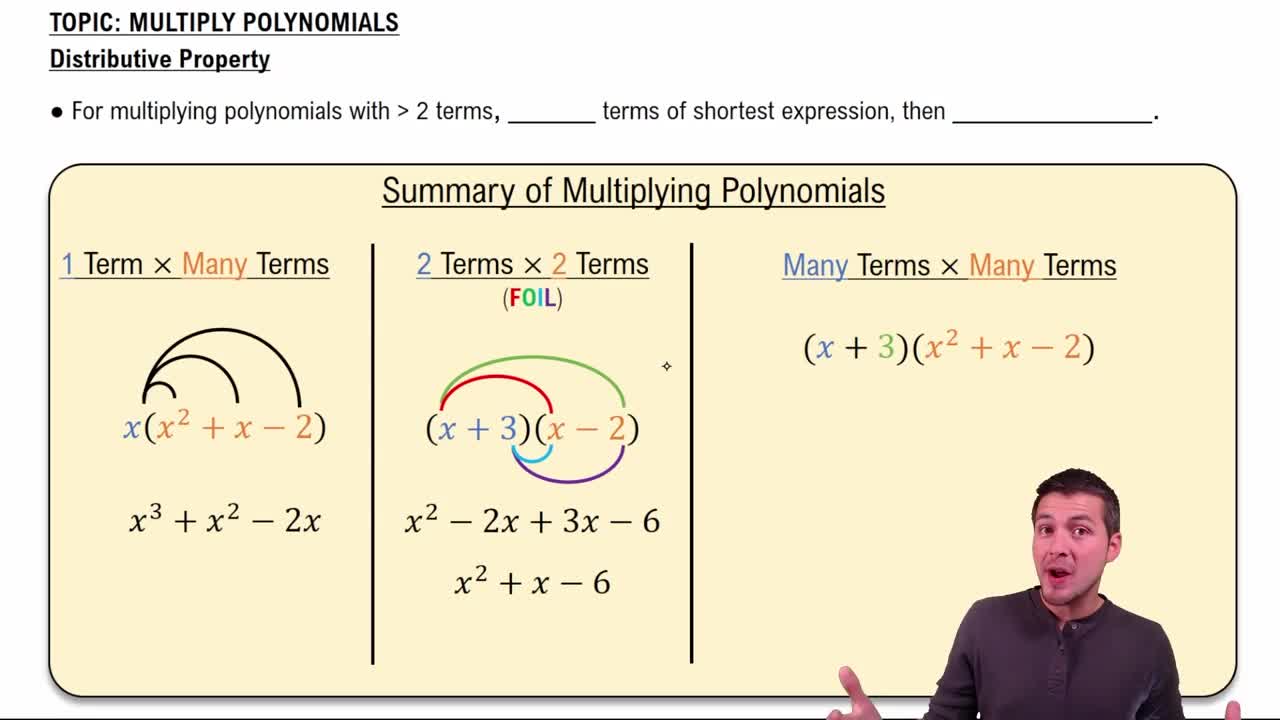Here are the essential concepts you must grasp in order to answer the question correctly.
Radical Expressions
Radical expressions involve roots, such as square roots or cube roots, and are essential in algebra. Understanding how to manipulate these expressions, including simplifying and combining them, is crucial for performing operations like addition, subtraction, multiplication, and division. For example, √2 and √3 are radical expressions that can be combined or multiplied according to specific algebraic rules.
Recommended video:
Radical Expressions with Fractions
Distributive Property
The distributive property states that a(b + c) = ab + ac, allowing us to multiply a single term by two or more terms inside parentheses. This property is vital when expanding expressions, such as in the given problem where we need to multiply two binomials. Proper application of this property ensures that all terms are accounted for in the final expression.
Recommended video:
Multiply Polynomials Using the Distributive Property
Combining Like Terms
Combining like terms is the process of simplifying expressions by adding or subtracting terms that have the same variable and exponent. In the context of radical expressions, this means grouping terms that contain the same radical. This concept is important for simplifying the result after performing operations, ensuring the final expression is in its simplest form.
Recommended video:
 Verified step by step guidance
Verified step by step guidance Verified video answer for a similar problem:
Verified video answer for a similar problem:

